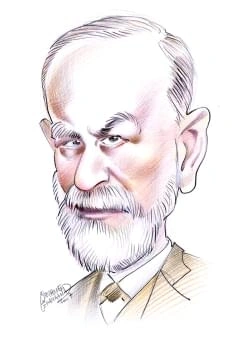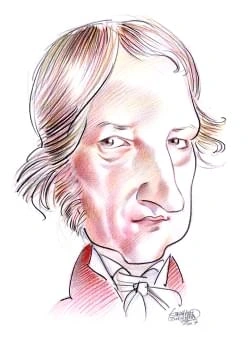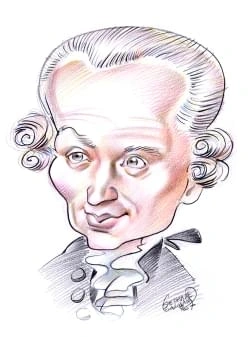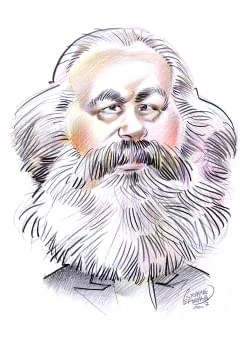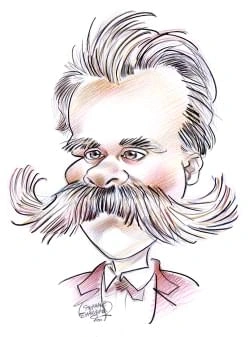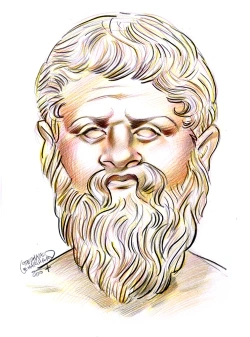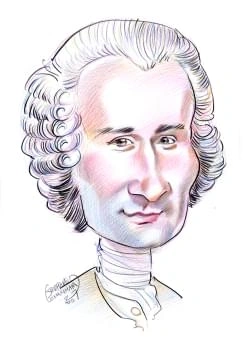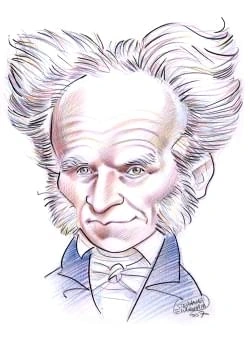23 résultats pour "dwelling"
-
Native American Architecture.
B Relationship to the Universe and Nature A more profound difference between European American and Native American perceptions lay in how human beings saw themselves in relationship to the universe andin what they believed their responsibilities were to the natural world and to each other. Most European Americans saw themselves as separate from creation andadversaries of nature, ever struggling to conquer and subdue nature and force it to yield to their will. Native Americans saw themselves as...
-
Native American Architecture
I
INTRODUCTION
Native American Architecture, traditional architecture of the peoples of who lived in North America before Europeans arrived.
Mound Builders who resided in the area.John Elk III/Bruce Coleman, Inc. Another mound building culture, named Hopewell, also appears to have originated in Ohio but expanded west to Iowa, Kansas, and Oklahoma, south to Louisiana,Mississippi, and Alabama, east to Georgia and the Appalachian Mountains, and north to Wisconsin, Michigan, and lower Ontario in Canada. The Hopewell culture lastedfrom about 200 BC to 400 AD. Hopewell people built large, linear mounds to create enclosures in geometrical...
-
House (architecture)
I
INTRODUCTION
Trulli in Alberobello, Italy
Alberobello, in the Apulia region of southeastern Italy, is noted for its unusual limestone houses known as trulli (from
Greek trullos, dome).
Fresco in the Villa of the Mysteries, PompeiiThe Villa of the Mysteries, Pompeii, Italy (built about 50 bc), featured a large hall with this mural encircling it. The mural ispainted in the Second Style of Roman painting. (Historians of art recognize four periods or styles in Roman wall painting.)The mural in the Villa of the Mysteries is thought to depict the initiation rituals of a mystery religion. For this reason, it hasbeen conjectured that the hall was used for cult rituals.Bridgeman Art Li...
-
Comparative Anatomy.
In comparing two species, anatomists have to be careful to differentiate between homologous structures, which are ones that have evolved from a shared ancestor, andanalogous structures, which have developed from different origins. Homologous structures are built on the same underlying plan. A human arm, a bat’s wing, and awhale’s flipper look quite different from the outside, but the bones inside reveal that these limbs all have the same basic structure. Analogous structures, by contrast,often l...
-
Albania - country.
Joining the international community in its concern over the degradation of the environment, Albania is party to international agreements concerning biodiversity, climatechange, and wetlands. III THE PEOPLE OF ALBANIA In 2008 Albania’s population estimate was 3,619,778, resulting in an average density of 132 persons per sq km (342 per sq mi). More and more people have left ruralareas for urban ones, particularly in the northern districts, such that in 2005 some 45 percent of the population live...
-
underworld (1) Greek The black abyss known
as Hades and the dwelling place of the dead.
Earth. By the middle of the third century b.c., Dis Pater and Proserpina had also become the rulers of the realm of dead spirits. Together they became an official part of the Roman religious ceremonies. Beginning in 249 b.c., Romans held games known as the Ludi Tarentini or Tarentine Games, to recognize, honor, and appease these two gods. Much of the mythology of Dis Pater and Proserpina had by this time taken on the stories of the Greek gods Hades (or Pluto) and Persephone, who ruled over a rea...
- Fairy and Fairy Tale Fairy and Fairy Tale, in folklore, a diminutive supernatural creature, generally in human form, dwelling in an imaginary region called fairyland; and the stories of its interventions through magic in mortal affairs.
-
Canadian Architecture
I
INTRODUCTION
L'Anse aux Meadows
In around ad 1000 Norse Vikings sailed from Greenland to North America and set up a village on the tip of what is now
the island of Newfoundland's Great Northern Peninsula.
IglooSome Inuit peoples in the Arctic regions of Canada live in domed houses of snow, or igloos, which provide good insulationand protection from wind. The word igloo comes from the Inuit iglu, meaning “house.”George Holton/Photo Researchers, Inc. Canada’s original inhabitants are known as the First Nations. At the time of European arrival, about 40 nations were scattered across Canada. Many of them lived alongthe coasts, where they could fish. These nations can be classified into five major gro...
-
-
Native Americans of Middle and South America.
A line that snakes across central Mexico near the Tropic of Cancer forms the northern boundary of Mesoamerica; north of this line rainfall sharply declines and theclimate is much drier. The ancient civilizations of Mesoamerica all arose and developed in the area between this line and the Guatemalan highlands far to the south. Richvolcanic soils are found throughout much of the region. A2 People and Languages Mesoamerica was a great melting pot, home to many peoples and interrelated cultures. In...
-
From Uncle Tom's Cabin - anthology.
the evils of slavery from sketches like these, is not the half that could be told, of the unspeakable whole. In the northern states, these representations may, perhaps, be thought caricatures; in the southern states are witnesses who know their fidelity. What personalknowledge the author has had, of the truth of incidents such as here are related, will appear in its time. It is a comfort to hope, as so many of the world's sorrows and wrongs have, from age to age, been lived down, so a ti...
-
Greek Art and Architecture - history.
powerful independent city-states. From 334 to 323 BC, Alexander the Great extended his father's empire into Asia Minor (now Turkey), Syria, Egypt, Persia, Afghanistan, and as far as India. D The Hellenistic Period (323-31 BC) Although Alexander the Great extended Greek civilization far beyond the Greek mainland and the boundaries of the Aegean Sea, his empire did not survive his death in 323.After Alexander died, his generals and successors divided the empire into a number of kingdoms: Ptolem...
-
Roman Art and Architecture - History.
Racecourses or circuses were also built in many cities for holding chariot races and horse races. Rome’s circus-shaped Piazza Navona occupies the site of one that wasbuilt during the reign ( AD 81-96) of the emperor Domitian. The largest circus in Rome, the Circus Maximus, held about 200,000 spectators. E Public Baths Large cities and small towns alike also had public baths ( thermae ); under the Republic they were generally made up of a suite of dressing rooms and bathing chambers with hot- ,...
-
Turtle.
Turtles use their jaws to cut and handle food. Instead of teeth, a turtle’s upper and lower jaws are covered by horny ridges, similar to a bird’s beak. Meat-eating turtlescommonly have knife-sharp ridges for slicing through their prey. Plant-eating turtles often have ridges with serrated edges that help them cut through tough plants.Turtles use their tongues in swallowing food, but unlike many other reptiles, such as chameleons, they cannot stick out their tongues to capture food. C Limb Structu...
-
Turtle - biology.
Turtles use their jaws to cut and handle food. Instead of teeth, a turtle’s upper and lower jaws are covered by horny ridges, similar to a bird’s beak. Meat-eating turtlescommonly have knife-sharp ridges for slicing through their prey. Plant-eating turtles often have ridges with serrated edges that help them cut through tough plants.Turtles use their tongues in swallowing food, but unlike many other reptiles, such as chameleons, they cannot stick out their tongues to capture food. C Limb Structu...
-
Venezuela - country.
Venezuela has six navigable rivers. Of the thousand or more streams in the country, the majority flow into the Orinoco. The Orinoco flows east across central Venezuelaand drains approximately four-fifths of the total area of the country. With the tributaries—the Apure, Meta, and Negro rivers—it forms the outlet into the Atlantic Oceanfor the waters of much of the interior of Colombia, as well as of inland Venezuela. F Climate The climate of Venezuela is tropical on the Llanos and along the coas...
-
Shark - biology.
Sharks have two-chambered hearts that are relatively small compared to the rest of their bodies. Blood flows from the heart to the gills, where it collects oxygen fromwater and then distributes it to the other organs and tissues. The small heart produces weak blood pressure, and many sharks must swim continuously to create themuscular contractions needed to circulate blood throughout their bodies. Most sharks are cold-blooded—that is, they do not generate heat by digesting food. Instead, the bod...
-
-
Greek Art and Architecture - USA History.
The struggle between these two city-states and their allies ultimately led to the Peloponnesian War (431-404 BC), which Sparta won. Despite this conflict, the 5th century, often called the Classical period, is usually considered the culmination of Greek art, architecture, and drama, with its highest achievements being the Temple ofZeus at Olympia, the Parthenon in Athens, and the plays of Athenian dramatists Aeschylus, Sophocles, Euripides, and Aristophanes. The 4th century, or Late Classical p...
-
From Bulfinch's Mythology: Prometheus and Pandora - anthology.
The world being thus furnished with inhabitants, the first age was an age of innocence and happiness, called the Golden Age. Truth and right prevailed, though not enforced by law, nor was there any magistrate to threaten or punish. The forest had not yet been robbed of its trees to furnish timbers for vessels, nor had men builtfortifications round their towns. There were no such things as swords, spears, or helmets. The earth brought forth all things necessary for man, without his labour inplo...
-
Primate - biology.
The primate order includes a handful of species that live entirely on meat (carnivores) and also a few that are strict vegetarians (herbivores), but it is composed chieflyof animals that have varied diets (omnivores). The carnivorous primates are the four species of tarsiers, which live in Southeast Asia. Using their long back legs, thesepocket-sized nocturnal hunters leap on their prey, pinning it down with their hands and then killing it with their needle-sharp teeth. Tarsiers primarily eat in...
-
Iranian Art and Architecture
I
INTRODUCTION
Iranian Art and Architecture, the visual arts of Iran.
The first great development of ancient Persian architecture took place under the Achaemenid dynasty during the Persian Empire, from about 550 to 330 BC. Remains of Achaemenian architecture are numerous, the earliest being ruins at Pasargadae, the capital city of Cyrus the Great. These ruins include two palaces, a sacred precinct, acitadel, a tower, and the tomb of Cyrus. The palaces were set in walled gardens and contained central columnar halls, the largest of which was 37 m (111 ft) in length...
-
Snake (reptile).
in their heads that conduct sound. They are able to hear low-frequency sounds and to sense vibrations that travel through the ground or water. The majority of snakeshave good eyesight, especially for detecting moving objects, although most burrowing snakes can only distinguish between light and dark. Pit vipers, boas, and pythons have an unusual adaptation for detecting warm-blooded prey and predators. On the heads of these snakes are small pits lined with cellsthat are extremely sensitive to he...
-
Native Americans of North America.
addition to smallpox and measles, explorers and colonists brought a host of other diseases: bubonic plague, cholera, typhoid fever, scarlet fever, pleurisy, mumps,diphtheria, pneumonia, whooping cough, malaria, yellow fever, and various sexually transmitted infections. Despite the undisputed devastation wreaked on Indian populations after European contact, native populations showed enormous regional variability in their response todisease exposure. Some peoples survived and, in some cases, even...
-
Native Americans of North America - Canadian History.
addition to smallpox and measles, explorers and colonists brought a host of other diseases: bubonic plague, cholera, typhoid fever, scarlet fever, pleurisy, mumps,diphtheria, pneumonia, whooping cough, malaria, yellow fever, and various sexually transmitted infections. Despite the undisputed devastation wreaked on Indian populations after European contact, native populations showed enormous regional variability in their response todisease exposure. Some peoples survived and, in some cases, even...
}})
